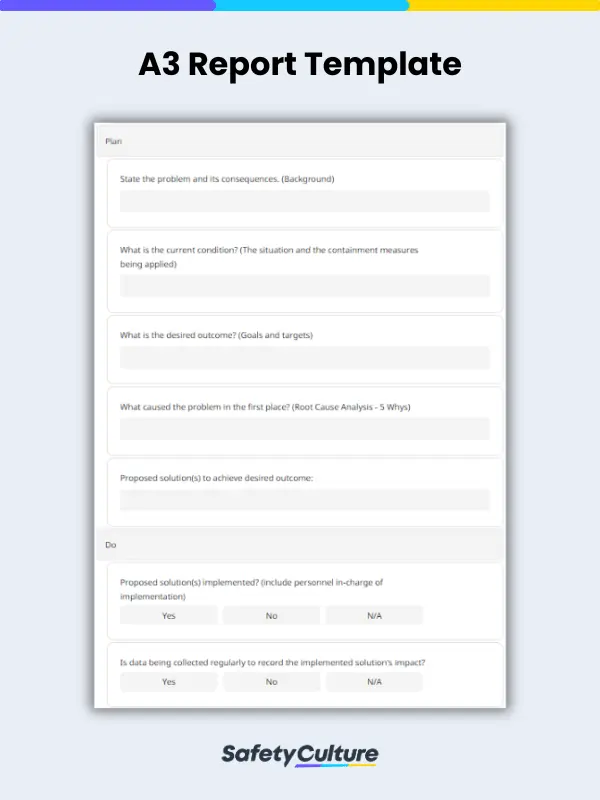What is an A3 Report?
An A3 report or A3 Model is a problem-solving method typically used by managers and supervisors to identify, understand, and resolve problems in a business setting. Having evolved from the Toyota Production System’s (TPS) lean management philosophy, it is now commonly used by various industries looking to improve their operational quality and efficiency.
The PDCA (plan-do-check-act or plan-do-check-adjust) is a management method utilized within the A3 Model. It is a scientific method that aims to:
- Establish the desired result and propose a solution to achieve it (plan)
- Test the proposed solution and gather data regarding its effectiveness (do)
- Analyze the data gathered from the test and compare results to the desired outcome (check)
- Make adjustments to the solution based on the data from the “do” and “check” phases until the goal is achieved (act or adjust)
Top 3 Reasons to Use A3 Reports
Despite the abundance of problem-solving models (8D, 5 Whys, CAPA, etc), there are still compelling reasons for businesses to make A3 lean reports an integral part of their organization. Failing to do an A3 report where it is warranted could result in project blowouts, productivity loss, and process inefficiency.
It is a versatile problem-solving tool
A successful business is one that constantly strives to operate at maximum capacity. A3 reporting helps achieve this ideal by identifying issues, inefficiencies, and ambiguities in the business process, then coming up with possible solutions. Through careful analysis, collaboration, and critical thinking, the A3 model can adapt to almost any type of business or industry.
To establish a culture of continuous improvement
Integrating the PDCA Method into their operational framework helps businesses adapt to any challenges that could negatively affect their operations, e.g., new trends, competition, or a shift in the economic landscape.
To communicate across functions and keep stakeholders informed of issues/problems
Though not primarily designed to be a communication tool, an A3 Report can be used to inform different functions as well as stakeholders regarding operational issues and plans to resolve them. It’s especially effective since its one-page format includes only the most relevant details of the matter.
Aside from functioning as a problem-solving and reporting tool, the A3 model can also be used for business proposals and business planning.
When NOT to Use an A3 Report
A3 reports are flexible and effective in the hands of a capable team. However, some issues aren’t complex enough to necessitate an A3 or may be addressed better with alternative problem-solving models.
If a problem can easily be fixed with a simple, obvious solution
Using an A3 Report on something as simple as tightening a loose screw or updating an erroneous entry on a spreadsheet is unnecessary. A3 Reports should be reserved for complex issues that require careful analysis, critical thinking, and a team to resolve.
If the problem and proposed solutions are too complex to fit in one-page
A problem’s scale and its impact must be properly evaluated before a team decides to use A3 to solve it. In such instances where A3 will not suffice, other, more thorough problem-solving models such as 8D may be the better option.



